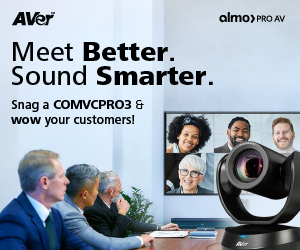 Product
Product
- What is it?
- Who needs it?
- How and why is it different, etc.?
- Price
- Anything having to do with setting the sell price.
- What price will consumers be willing to pay?
- Will it be a premium item or a value product?
- High volume or custom pricing?
- Place
- This can be a physical space, a specific media platform, or a vertical market.
- Promotion
- How will the customers be made aware of the product offering and motivated to purchase?
Traditionally, the four P’s are included as a component of the Marketing Plan, similar to the Executive Summary and SWOT Analysis. However, it is not typically considered to be a useful decision-making tool for the everyday. Additionally, the four P’s are widely considered a marketing or advertising tool, and are not often used for other areas such as sales and business development.
When I was going to school for my MBA, I was a part-time student while also working in AV full-time. At the time, I was a Business Development Manager, and I was tasked with launching a new line of private label mounts for flat panel displays and projectors. To be completely honest, the product line was nothing special and certainly had no advantages over competing products in terms of functional attributes. Frankly, it were to be compared to competing products based on features and specs, the competition would win 10 times out of 10. From a pricing perspective, we could certainly be priced lower comparatively to other broad-featured brands, but there were plenty of “value brands” available already.
My task was simple: Figure out how to sell it.
 The first thing I did was to put together a SWOT analysis.
The first thing I did was to put together a SWOT analysis.
See my last blog for more on SWOT.
Next, I decided to establish the Four P’s.
The Product seemed self-evident at first—display mounts?!?! But as looked back at the SWOT, the weaknesses of the product were overwhelming. I had to shift my focus to the strengths and opportunities columns. I kept coming back to the same few strengths and opportunities: dealer profit, one-stop-shop, private brand. As I considered these advantages, it occurred to me that I was not offering a physical, functional item. I was offering a tool that integrators could use to win more business. Essentially, we weren’t selling mounts, we were offering dealers a way to make more money.
 When considering Price, I knew that we could not fetch the same price for this line that we would for a premium brand. I also knew that if we priced the product to be the lowest on the market, there would be no profit for the dealer and our product would be compared with cheap, inferior products that were not intended for professional use. Looking back at the newly defined product offer being a sales tool vs. a physical product, I looked at pricing in a similar way. Instead of a strategic price level—low, middle, high, etc.—it seemed to make more sense to again relate the price to the customer vs. the market. We would set a MAP (minimum advertised price) that was designed to deliver a significantly higher-than-average profit margin to our dealer. So, of course, the product had a price, but the focus was on dealer profit vs. end user cost.
When considering Price, I knew that we could not fetch the same price for this line that we would for a premium brand. I also knew that if we priced the product to be the lowest on the market, there would be no profit for the dealer and our product would be compared with cheap, inferior products that were not intended for professional use. Looking back at the newly defined product offer being a sales tool vs. a physical product, I looked at pricing in a similar way. Instead of a strategic price level—low, middle, high, etc.—it seemed to make more sense to again relate the price to the customer vs. the market. We would set a MAP (minimum advertised price) that was designed to deliver a significantly higher-than-average profit margin to our dealer. So, of course, the product had a price, but the focus was on dealer profit vs. end user cost.
Deciding the Place, or who and where we would sell the product was probably the most difficult decision. The easy answer would be to sell the product through as many outlets as possible, including online, to maximize sales. But if we were to do that, our dealers would face more competition and pricing pressure, which would result in less sales and profit. The decision was made to sell ONLY to professional integrators and NEVER to offer the product online.
Finally, it was time to look at Promotion. In the previous three P’s, we established our brand story, but now we needed a platform to tell that story. We deployed a direct sales approach that focused on communicating the value proposition—more sales—directly to the dealer. We would promote the product line through call campaigns, on all AV projects that included a display, in industry publication ads and during live tradeshows.
 Slowly but surely, we began to see sales grow, and now twenty years later, the product line is still active, dealers are still making outstanding profits and end users have still never heard of it!!! Just how it was intended.
Slowly but surely, we began to see sales grow, and now twenty years later, the product line is still active, dealers are still making outstanding profits and end users have still never heard of it!!! Just how it was intended.
If you’re interested in finding out more about this product line, feel free to reach out to me directly. But this is not the right place for me to promote this product and we never advertise our price online.
Check out these links for more information the Four P’s:

Tom Keefe | CTS, DMC-D-4K, DSCE
Category Manager – dvLED
Supported Manufacturers: Direct View LED








